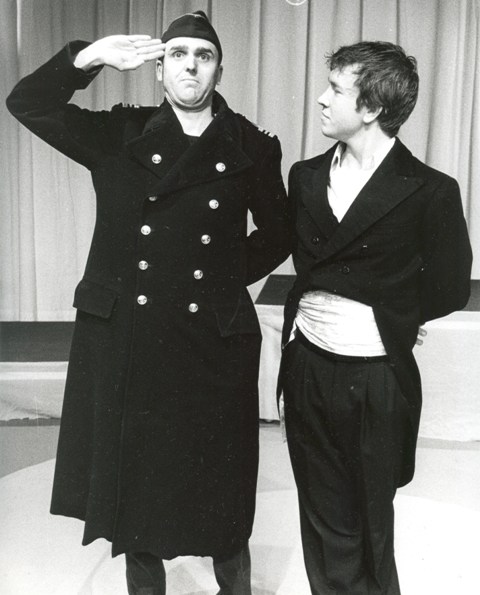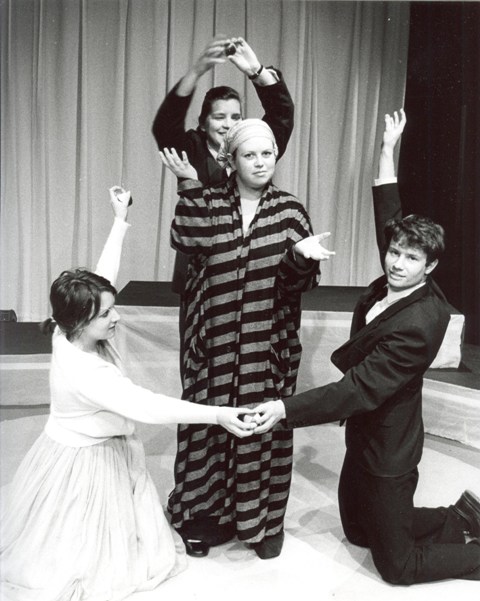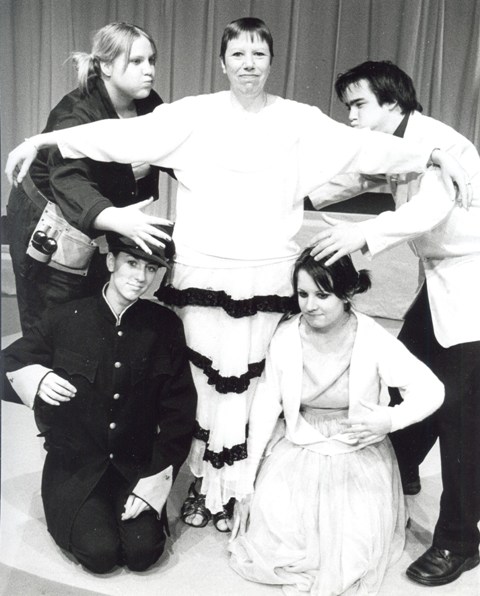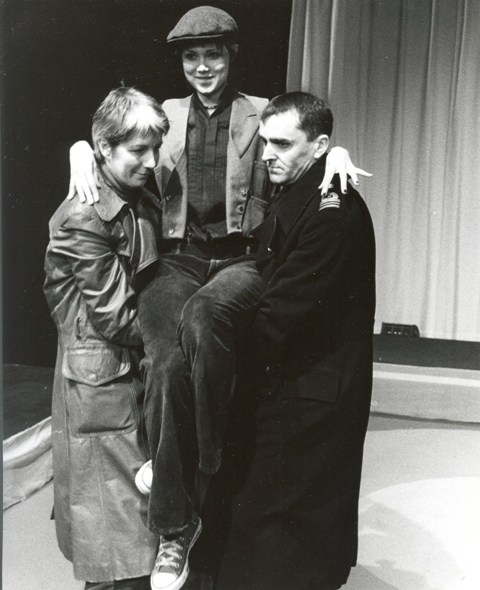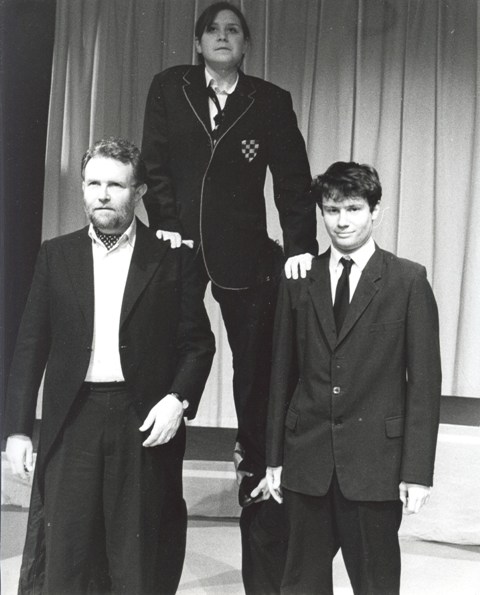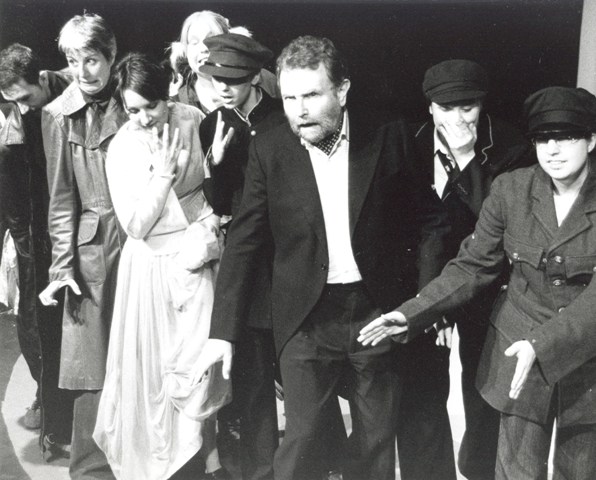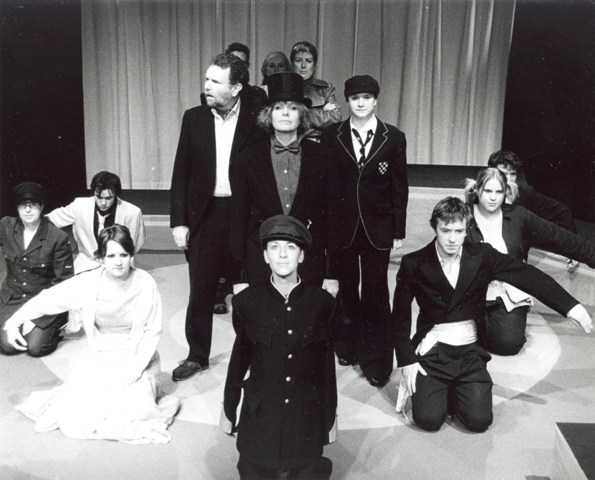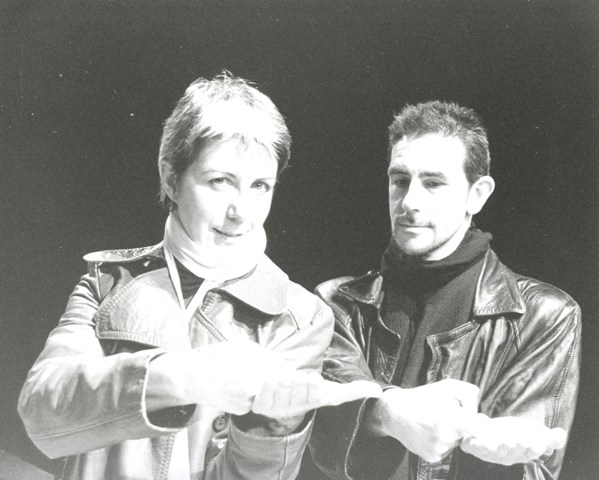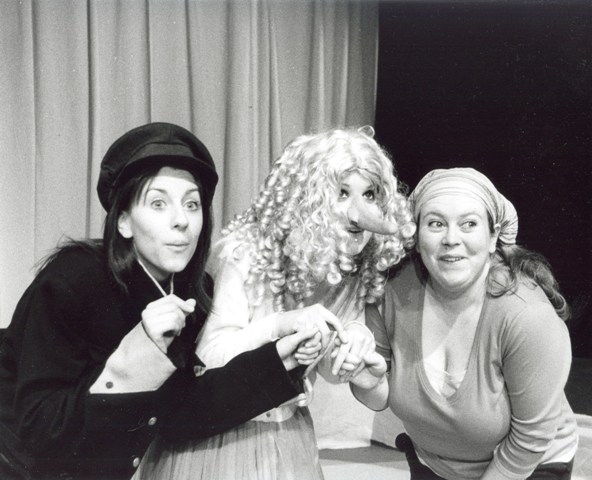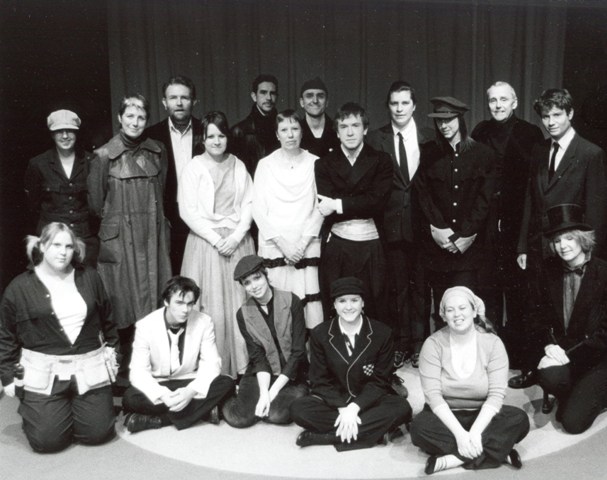The Bench Production
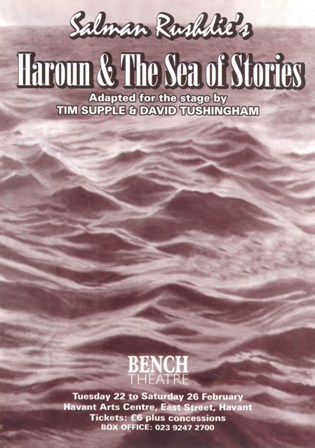
This play was staged at Havant Arts Centre, East Street Havant - Bench Theatre's home since 1977.
Characters
| Haroun Khalifa | Emma Skinner |
| Rashid Khalifa | David Penrose |
| Soraya Khalifa | Sally Hartley |
| Mr Sengupta | Pete Woodward |
| Oneeta Sengupta | Steph Chaplen |
| Unsmiling Men | Gina Farmer Jeff Bone |
| Mr Butt | Vicky Hayter |
| Snooty Buttoo | Sue Dawes |
| Iff, the Water Genie | Sam Dekker |
| Butt, the Hoopoe | Vicky Hayter |
| Dream Princess | Cassie Bond |
| Mali, the Floating Gardener | Laura Bradshaw |
| Goopy | Mike Haigh |
| Bagha | Gina Farmer |
| General Kitab | Andrew Caple |
| Prince Bolo | Martin McBride |
| Blabbermouth | Gemma Moore |
| Princess Batcheat | Cassie Bond |
| Mudra | Sally Hartley |
| Mudra's Shadow | Darryl Wakelin |
| Khattam-Shud | Pete Woodward |
| Ambassador | Zoë Chapman |
| Egghead | Steph Chaplen |
| The Walrus | Jeff Bone |
| Passers-By | Gina Farmer Jeff Bone |
Crew
| Director | Damon Wakelin |
| Producer | Sharman Callam |
| Stage Manager | John Wilcox |
| Assistant to the Director | Jo Bone |
| Lighting Design | Jacquie Penrose Damon Wakelin |
| Lighting Operation | Peter Corrigan |
| Soundscape | Damon Wakelin Daryl Wakelin |
| Sound Operation | Derek Callam |
| Props | John Wilcox Sharman Callam |
| Set Design | Damon Wakelin |
| Set Construction | John Wilcox |
| Programme Editor | Derek Callam |
| Photographs | Bill Whiting |
| Front of House | Sharman Callam |
Director's Notes
Some history first because 'Haroun' has been different from the start...
Coming hard on the heels of the epic that was 'A Christmas Carol', it was felt that maybe the company would want to do a small cast play - give all those involved in 'Carol' time to re-charge their batteries. At the same time we are, as a company, committed to creating opportunities for as many of our members as possible to get involved.
I offered to find a play that would accommodate everyone that wanted to do something in the February slot. Expecting maybe half a dozen hands at the most, imagine my surprise when sixteen paws went up! From this conundrum emerged 'Haroun and the Sea of Stories'.
Duly selected from the three plays I offered, (Berkoff's 'The Trial' and Liz Lochhead's new version of the Theban Trilogy were the others), 'Haroun' began to take shape with our final cast count of eighteen.
To me, the appeal of this play is two-fold.
Firstly, it is a nice little story, simply told yet deceptively complex. 'Haroun' was a novel before it was a play, but even before that, 'Haroun' was a series of bedtime stories Rushdie invented for his children, (having got bored of reading those available in print!) So, therein lies the simplicity and the structure of the piece; on the page it consists of 34 short, episodic scenes, whilst in the playing it runs as two Acts. The story is a classic Good v. Evil ripping yarn; lots of colourful characters and a whole host of obstructions and obstacles to overcome with, of course, a happy ending. Within that, we have Rushdie's personal situation at the time he was writing the book itself. 'Haroun' was the first novel written after the Ayatollah (the Shah of Blah perhaps?) had issued his fatwa on Rushdie. How apt then, that the book and the play deal implicitly with stories and the freedom of speech. As the Hoopoe Bird observes, "what is the point of giving persons Freedom of Speech, if you then say they must not utilise same? And is not the Power of Speech the greatest Power of all? Then surely it must be exercised to the full?"
Secondly, there is the staging of the play. This is not a naturalistic world, nor are the characters or locations - and the scene is constantly shifting. In that regard the play is almost cinematic, yet with a single narrative thread. The solution is simple; physical theatre. Easily said, not so easily done! The Bench have never performed in this style before and my cast ranges from teenagers to, well... let us just say that winter heating allowances are available to some members of the cast! So, how do you realise stage directions such as "The Cultmaster grows and grows until he is one hundred and one feet tall, with one hundred and one heads..."? The play is full of such moments. It is a great challenge. Working with a little imagination and a large dose of humour we have resolved each 'moment' as we have encountered it. What we have tried to achieve is a living environment for the characters of the play to exist in, an environment that supports those characters and their stories. And we have tried very hard not to break anybody!
Enormous thanks must go to the cast who have responded with the most remarkable levels of willingness, imagination, patience and humour to the challenges we have met. I hope that all their hard work receives the rewards it deserves.
Lighting
As you will see, lighting plays an enormous part in this production. Jacquie and I put our heads together early on and came up with a plan... a plan that Jacquie then had to realise. Brave woman, our Jacquie. Drawing from the non-naturalistic form of the production, we decided on several key elements that we hope will make the production come alive in new ways. Firstly, lots of lighting from the side rather than overhead - this will give us a completely different set of shadows to play with and also employs a light method more familiar to dance than theatre audiences. Secondly, there is the cyclorama that dominates the rear of the stage. Having agreed to use it we than had to acknowledge its presence almost as an additional character within the play and what is more, a character that is always on stage and must always be 'alive' and active. Then there are the torches...
Sound
Also pretty important. Real life does not necessarily have a soundtrack, despite what Hollywood might like us to believe. The world of this play does, however, lend itself to all sorts of soundscaping. I am indebted to Darryl for his expertise and also to Nathan Chapman for large chunks of his CD collection! The music is deliberately eclectic. Rushdie draws on Western and Eastern influences throughout the play, so I thought we would mirror that in the music we used. There are, of course, strong Indian influences, but they are drawn from a more contemporary Anglo-Indian tradition, artists such as Talvin Singh, Cornershop and Nitin Sawhney. I was torn for a while as to which song to use for the finale of the play. I knew it would be U2 or The Beatles. The Beatles because there are characters in the play drawn from a particular Beatles song, (you won't miss it, I promise), and U2 because Rushdie wrote the lyrics to a track called 'The Ground Beneath Her Feet' for their 'All That You Can't Leave Behind' album. I went for U2. I like U2.
Damon Wakelin
Reviews
The NewsNeil Pugmire
Telling tales with a fantastical slant and a swipe
It's not difficult to see the subtext of this novel-turned play from Salman Rushdie - written only two years after he was issued with a death sentence for The Satanic Verses. It pits a good storyteller against an evil Cultmaster who reigns over a dark land and sews together people's lips to keep them quiet. Hmm. Could this be about censorship, by any chance?
The method Rushdie uses is fantasy adventure, apparently taken from stories he used to tell his own children. In a magical land, our hero, Haroun, and his father, Rashid, discover the source of all stories and battle evil to prevent the old tales from being polluted.
Because the script is so other-worldly, Bench Theatre Company do away with complex props, costumes and scenery. The 18 actors play all the characters, animals and objects themselves, from buses to boats, and from fish to peacocks. This physical theatre approach is a new one for the company, but is done well and keeps the action flowing seamlessly through umpteen changes of location.
Sally Hartley's fluency in a pseudo-sign language is a particular highlight. Add an innovative lighting design and what amounts to virtually a soundtrack for the whole play and the result is almost cinematic. Bench Theatre's production of Haroun and the Sea of Stories runs until Saturday.
The News, 23rd February 2005
